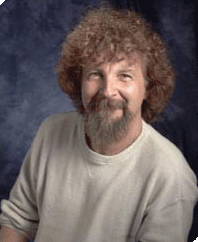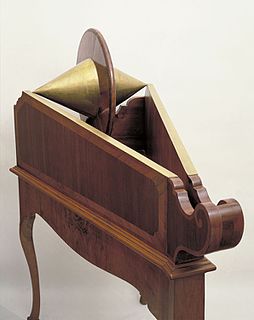Related Research Articles

The holographic principle is a tenet of string theories and a supposed property of quantum gravity that states that the description of a volume of space can be thought of as encoded on a lower-dimensional boundary to the region—such as a light-like boundary like a gravitational horizon. First proposed by Gerard 't Hooft, it was given a precise string-theory interpretation by Leonard Susskind who combined his ideas with previous ones of 't Hooft and Charles Thorn. As pointed out by Raphael Bousso, Thorn observed in 1978 that string theory admits a lower-dimensional description in which gravity emerges from it in what would now be called a holographic way. The prime example of holography is the AdS/CFT correspondence.

A theory of everything, final theory, ultimate theory, or master theory is a hypothetical single, all-encompassing, coherent theoretical framework of physics that fully explains and links together all physical aspects of the universe. Finding a TOE is one of the major unsolved problems in physics. Over the past few centuries, two theoretical frameworks have been developed that, together, most closely resemble a TOE. These two theories upon which all modern physics rests are general relativity (GR) and quantum field theory (QFT). GR is a theoretical framework that only focuses on gravity for understanding the universe in regions of both large scale and high mass: stars, galaxies, clusters of galaxies, etc. On the other hand, QFT is a theoretical framework that only focuses on three non-gravitational forces for understanding the universe in regions of both small scale and low mass: sub-atomic particles, atoms, molecules, etc. QFT successfully implemented the Standard Model that describes the three non-gravitational forces -- strong nuclear, weak nuclear, and electromagnetic force -- as well as all observed elementary particles.
Reality is the sum or aggregate of all that is real or existent within a system, as opposed to that which is only imaginary. The term is also used to refer to the ontological status of things, indicating their existence. In physical terms, reality is the totality of a system, known and unknown. Philosophical questions about the nature of reality or existence or being are considered under the rubric of ontology, which is a major branch of metaphysics in the Western philosophical tradition. Ontological questions also feature in diverse branches of philosophy, including the philosophy of science, philosophy of religion, philosophy of mathematics, and philosophical logic. These include questions about whether only physical objects are real, whether reality is fundamentally immaterial, whether hypothetical unobservable entities posited by scientific theories exist, whether God exists, whether numbers and other abstract objects exist, and whether possible worlds exist.
An interpretation of quantum mechanics is an attempt to explain how the mathematical theory of quantum mechanics "corresponds" to reality. Although quantum mechanics has held up to rigorous and extremely precise tests in an extraordinarily broad range of experiments, there exist a number of contending schools of thought over their interpretation. These views on interpretation differ on such fundamental questions as whether quantum mechanics is deterministic or random, which elements of quantum mechanics can be considered "real", and what is the nature of measurement, among other matters.
Simulated reality is the hypothesis that reality could be simulated—for example by quantum computer simulation—to a degree indistinguishable from "true" reality. It could contain conscious minds which may or may not be fully aware that they are living inside a simulation. This is quite different from the current, technologically achievable concept of virtual reality. Virtual reality is easily distinguished from the experience of actuality; participants are never in doubt about the nature of what they experience. Simulated reality, by contrast, would be hard or impossible to separate from "true" reality. There has been much debate over this topic, ranging from philosophical discourse to practical applications in computing.
In physics and cosmology, digital physics is a collection of theoretical perspectives based on the premise that the universe is describable by information. It is a form of digital ontology about the physical reality. According to this theory, the universe can be conceived of as either the output of a deterministic or probabilistic computer program, a vast, digital computation device, or mathematically isomorphic to such a device.
Implicate order and explicate order are ontological concepts for quantum theory coined by theoretical physicist David Bohm during the early 1980s. They are used to describe two different frameworks for understanding the same phenomenon or aspect of reality. In particular, the concepts were developed in order to explain the bizarre behavior of subatomic particles which quantum physics struggles to explain.

Wojciech Hubert Żurek is a Polish theoretical physicist and a leading authority on quantum theory, especially decoherence and non-equilibrium dynamics of symmetry breaking and resulting defect generation.
Henry Pierce Stapp is an American mathematical physicist, known for his work in quantum mechanics, particularly the development of axiomatic S-matrix theory, the proofs of strong nonlocality properties, and the place of free will in the "orthodox" quantum mechanics of John von Neumann.

The Fabric of the Cosmos: Space, Time, and the Texture of Reality (2004) is the second book on theoretical physics, cosmology, and string theory written by Brian Greene, professor and co-director of Columbia's Institute for Strings, Cosmology, and Astroparticle Physics (ISCAP).
In physics, complementarity is both a theoretical and an experimental result of quantum mechanics, also referred to as principle of complementarity. Formulated by Niels Bohr, a leading founder of quantum mechanics, the complementarity principle holds that objects have certain pairs of complementary properties which cannot all be observed or measured simultaneously.

A physical paradox is an apparent contradiction in physical descriptions of the universe. While many physical paradoxes have accepted resolutions, others defy resolution and may indicate flaws in theory. In physics as in all of science, contradictions and paradoxes are generally assumed to be artifacts of error and incompleteness because reality is assumed to be completely consistent, although this is itself a philosophical assumption. When, as in fields such as quantum physics and relativity theory, existing assumptions about reality have been shown to break down, this has usually been dealt with by changing our understanding of reality to a new one which remains self-consistent in the presence of the new evidence.

What Is Life? The Physical Aspect of the Living Cell is a 1944 science book written for the lay reader by physicist Erwin Schrödinger. The book was based on a course of public lectures delivered by Schrödinger in February 1943, under the auspices of the Dublin Institute for Advanced Studies where he was Director of Theoretical Physics, at Trinity College, Dublin. The lectures attracted an audience of about 400, who were warned "that the subject-matter was a difficult one and that the lectures could not be termed popular, even though the physicist’s most dreaded weapon, mathematical deduction, would hardly be utilized." Schrödinger's lecture focused on one important question: "how can the events in space and time which take place within the spatial boundary of a living organism be accounted for by physics and chemistry?"

Programming the Universe: A Quantum Computer Scientist Takes On the Cosmos is a 2006 popular science book by Seth Lloyd, professor of mechanical engineering at the Massachusetts Institute of Technology. The book proposes that the universe is a quantum computer, and advances in the understanding of physics may come from viewing entropy as a phenomenon of information, rather than simply thermodynamics. Lloyd also postulates that the universe can be fully simulated using a quantum computer; however, in the absence of a theory of quantum gravity, such a simulation is not yet possible.
The quantum mind or quantum consciousness is a group of hypotheses which proposes that classical mechanics cannot explain consciousness. It posits that quantum mechanical phenomena, such as quantum entanglement and superposition, may play an important part in the brain's function and could form the basis for an explanation of consciousness.
The simulation hypothesis or simulation theory proposes that all of reality, including the Earth and the universe, is in fact an artificial simulation, most likely a computer simulation. Some versions rely on the development of a simulated reality, a proposed technology that would seem realistic enough to convince its inhabitants the simulation was real. The hypothesis has been a central plot device of many science fiction stories and films.
Everything is all that exists; the opposite of nothing, or its complement. It is the totality of things relevant to some subject matter. Without expressed or implied limits, it may refer to anything. The Universe is everything that exists theoretically, though a multiverse may exist according to theoretical cosmology predictions. It may refer to an anthropocentric worldview, or the sum of human experience, history, and the human condition in general. Every object and entity is a part of everything, including all physical bodies and in some cases all abstract objects.
Diederik Aerts is a Belgian theoretical physicist and a professor at Brussels Free University, where he directs the Center Leo Apostel for Interdisciplinary Studies (CLEA).
Quantum fiction is a literary genre that reflects modern experience of the material world and reality as influenced by quantum theory and new principles in quantum physics. The genre is not necessarily science-themed and blurs the line separating science fiction and fantasy into a broad scope of mainstream literature that transcends the mechanical model of science and involves the fantasy of human perception or imagination as realistic components affecting the every day physical world. Quantum fiction is characterized by the use of an element in quantum mechanics as a storytelling device. In quantum fiction, everyday life hinges on some aspect of the quantum nature of reality.
The von Neumann–Wigner interpretation, also described as "consciousness causes collapse [of the wave function]", is an interpretation of quantum mechanics in which consciousness is postulated to be necessary for the completion of the process of quantum measurement.
References
- ↑ Campbell, Tom; Owhadi, Houman; Sauvageau, Joe; Watkinson, David (June 17, 2017). "On Testing the Simulation Theory". International Journal of Quantum Foundations. 3 (3): 78–99.
- ↑ "Do we live in a Virtual Reality?". Kickstarter. Retrieved 2018-09-15.
- ↑ Updates | Center for the Unification of Science And Consciousness
- ↑ ntrs.nasa.gov: Designing a Composable Geometric Toolkit for Versatility in Applications to Simulation Development (PDF)
- ↑ Thomas W. Campbell at Google Books
- ↑ MBTEVENTS (23 May 2010). "Tom Campbell and Dennis Mennerich Interview : Respect for All Life" – via YouTube.
- ↑ My Big Toe: Awakening, Discovery, Inner Workings: A Trilogy Unifying Philosophy, Physics, and Metaphysics Thomas W. Campbell at Google Books
- ↑ "Tom Campbell's YouTube Stats (Summary Profile) - Social Blade Stats". socialblade.com. Retrieved 2019-12-03.
- ↑ "Tom Campbell". YouTube. Retrieved 2019-12-03.